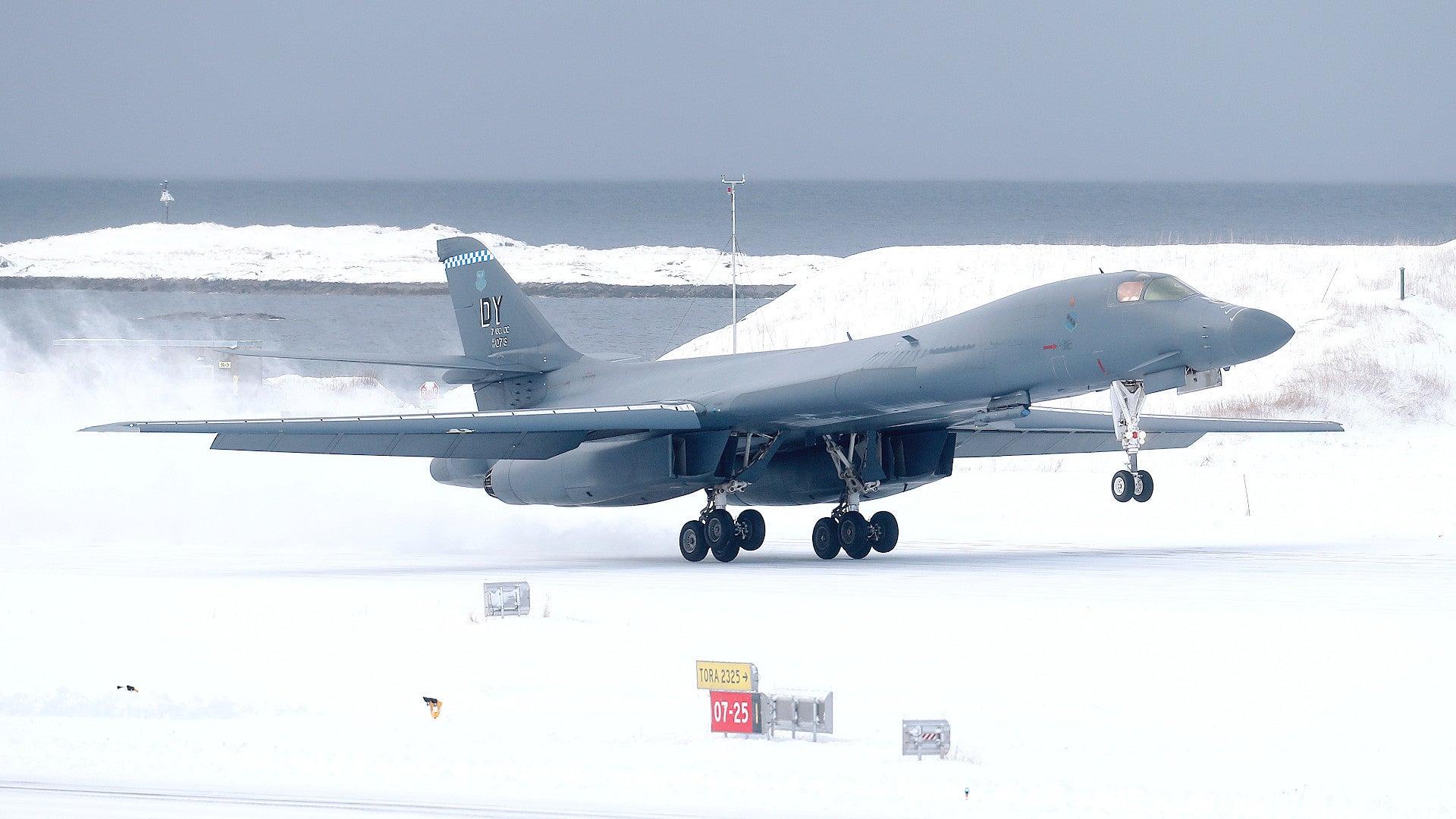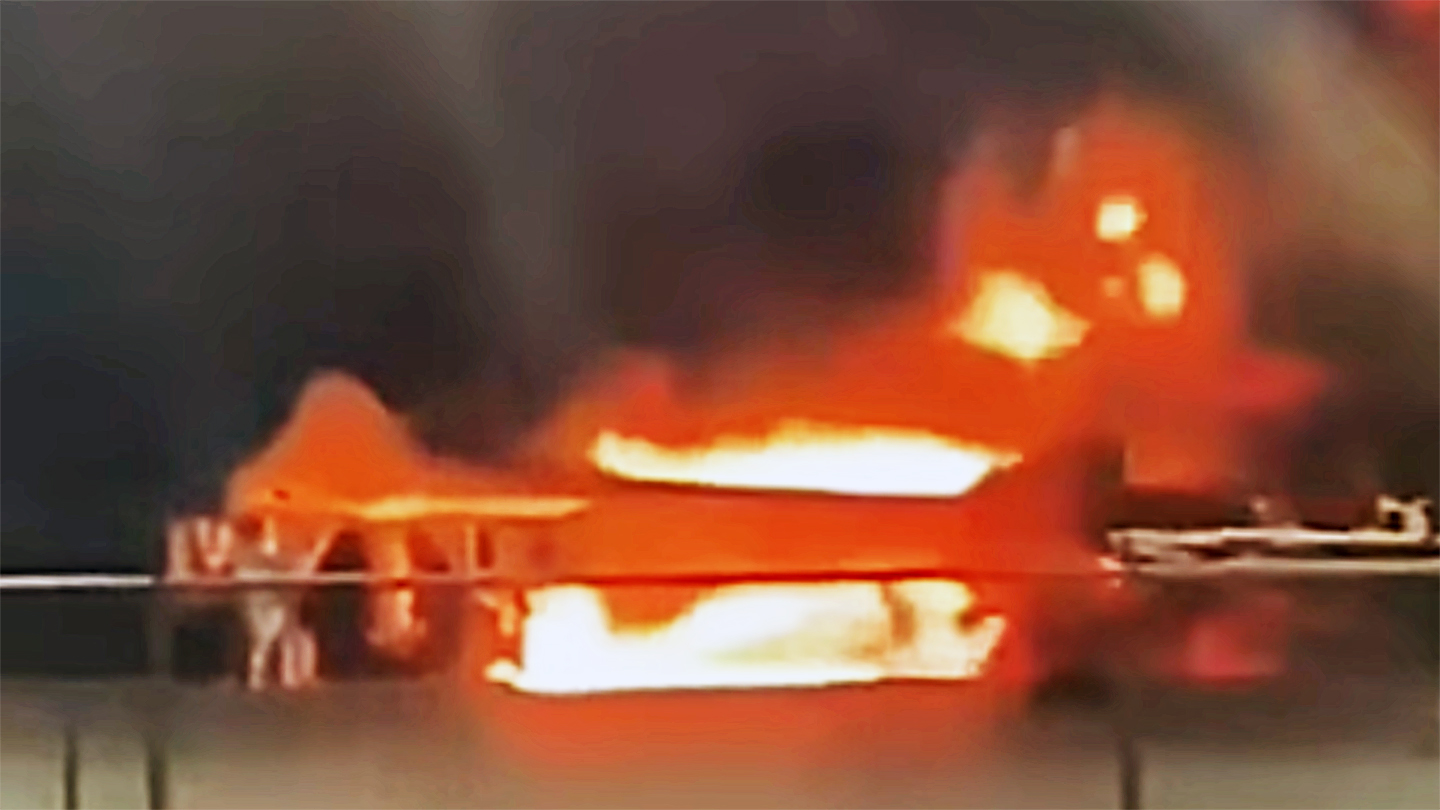The U.S. Air Force’s 7th Bomb Wing has confirmed that one of its B-1B Lancer bombers was involved in a flight-line incident at Dyess Air Force Base, Texas, last night when one of its engines caught fire. The wing’s Public Affairs Office said in a statement that the aircraft was undergoing maintenance when the fire broke out.
According to the official account, the B-1 caught fire at around 10:00 PM local time on April 20, with the aircraft receiving routine engine maintenance while parked on the flight line.
“Emergency response personnel arrived immediately and contained the scene,” the statement adds, although two individuals were injured and transported to a nearby medical center with non-life-threatening injuries.
This is the extent of the information released by the Air Force so far, although an unofficial video, 39 seconds long, also posted above, has appeared showing what looks to be a fierce fire burning under and around the aircraft.
The level of damage to the bomber and whether or not it will have to be written off is unclear at this time, but at best it will require a period of repairs and its absence will further reduce the size of the functional B-1 fleet. This incident comes at an inopportune moment in that regard, with the Air Force having last September completed the early retirement of 17 B-1s, as the first step toward retiring the entire fleet within the next decade or so.

The divestiture of 17 aircraft was supposed to help consolidate the B-1 fleet and improve its readiness rates ahead of the type’s complete replacement by the B-21 Raider stealth bomber.
That the B-1 has had issues with its availability is nothing new, of course. In April last year, the entire fleet was temporarily grounded after a ground emergency on one of the bombers relating to an augmenter fuel pump filter housing, after landing at Ellsworth Air Force Base, South Dakota.
Prior to that incident, one of the B-1s that took part in a historic deployment to Norway earlier the same year suffered significant engine damage while in that country. That deployment officially wrapped up in March 2021. As a result of that mishap, the leadership of the 7th Bomb Wing at Dyess decided to relieve a maintenance squadron commander there “due to loss of confidence” in their ability to command.

While there is currently no evidence to suggest that the incident at Dyess last night and the one in Norway are in any way directly linked, they nevertheless emphasize the poor run that the B-1 has had in the last year or so when it comes to maintenance and availability.
Before the run of propulsion-related problems, the Lancer fleet was also afflicted by issues related to its emergency egress system. The Air Force grounded the fleet twice in less than a year over problems with the aircraft’s ejection seats and then with the drogue parachutes that stabilize the ejection seats if the crew has to punch out.
Beyond losing another B-1 from the 45-strong frontline fleet, even for a limited time, there is the possibility that whatever happened to the aircraft at Dyess yesterday could be the symptom of a wider problem, as was the case with the augmenter fuel pump filter housing and the emergency egress system. Were that to be the case, other aircraft would require inspection and, potentially, remedial action to fix the problem.
Update, April 22:
An official from Dyess Air Force Base has told Air Force Magazine that the cause of the B-1B fire is still being investigated and that, at this stage, it remains unclear if the aircraft can be salvaged. The same official confirmed that operations at the base were continuing as usual, “except for that one area of the flight line.”
Meanwhile, the same publication quoted a statement from Col. Joseph Kramer, commander of the 7th Bomb Wing, who said: “Our B-1 fleet and warfighters remain ready to execute any long-range strike mission,” indicating that, at this stage, there has not been a fleet-wide grounding order.
Contact the author: thomas@thedrive.com
